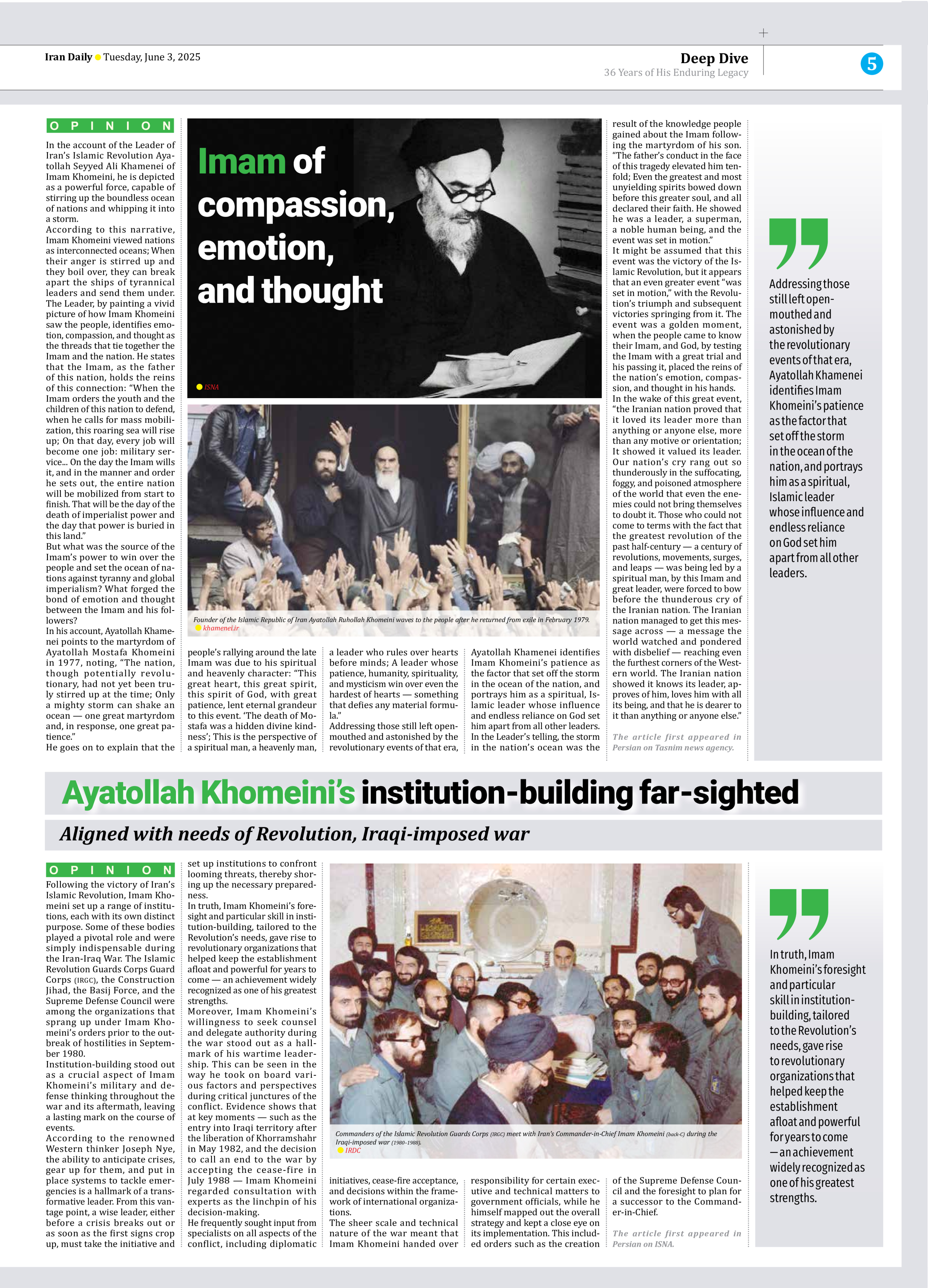
Ayatollah Khomeini’s institution-building far-sighted
Aligned with needs of Revolution, Iraqi-imposed war
Following the victory of Iran’s Islamic Revolution, Imam Khomeini set up a range of institutions, each with its own distinct purpose. Some of these bodies played a pivotal role and were simply indispensable during the Iran-Iraq War. The Islamic Revolution Guards Corps Guard Corps (IRGC), the Construction Jihad, the Basij Force, and the Supreme Defense Council were among the organizations that sprang up under Imam Khomeini’s orders prior to the outbreak of hostilities in September 1980.
Institution-building stood out as a crucial aspect of Imam Khomeini’s military and defense thinking throughout the war and its aftermath, leaving a lasting mark on the course of events.
According to the renowned Western thinker Joseph Nye, the ability to anticipate crises, gear up for them, and put in place systems to tackle emergencies is a hallmark of a transformative leader. From this vantage point, a wise leader, either before a crisis breaks out or as soon as the first signs crop up, must take the initiative and set up institutions to confront looming threats, thereby shoring up the necessary preparedness.
In truth, Imam Khomeini’s foresight and particular skill in institution-building, tailored to the Revolution’s needs, gave rise to revolutionary organizations that helped keep the establishment afloat and powerful for years to come — an achievement widely recognized as one of his greatest strengths.
Moreover, Imam Khomeini’s willingness to seek counsel and delegate authority during the war stood out as a hallmark of his wartime leadership. This can be seen in the way he took on board various factors and perspectives during critical junctures of the conflict. Evidence shows that at key moments — such as the entry into Iraqi territory after the liberation of Khorramshahr in May 1982, and the decision to call an end to the war by accepting the cease-fire in July 1988 — Imam Khomeini regarded consultation with experts as the linchpin of his decision-making.
He frequently sought input from specialists on all aspects of the conflict, including diplomatic initiatives, cease-fire acceptance, and decisions within the framework of international organizations.
The sheer scale and technical nature of the war meant that Imam Khomeini handed over responsibility for certain executive and technical matters to government officials, while he himself mapped out the overall strategy and kept a close eye on its implementation. This included orders such as the creation of the Supreme Defense Council and the foresight to plan for a successor to the Commander-in-Chief.
The article first appeared in
Persian on ISNA.







